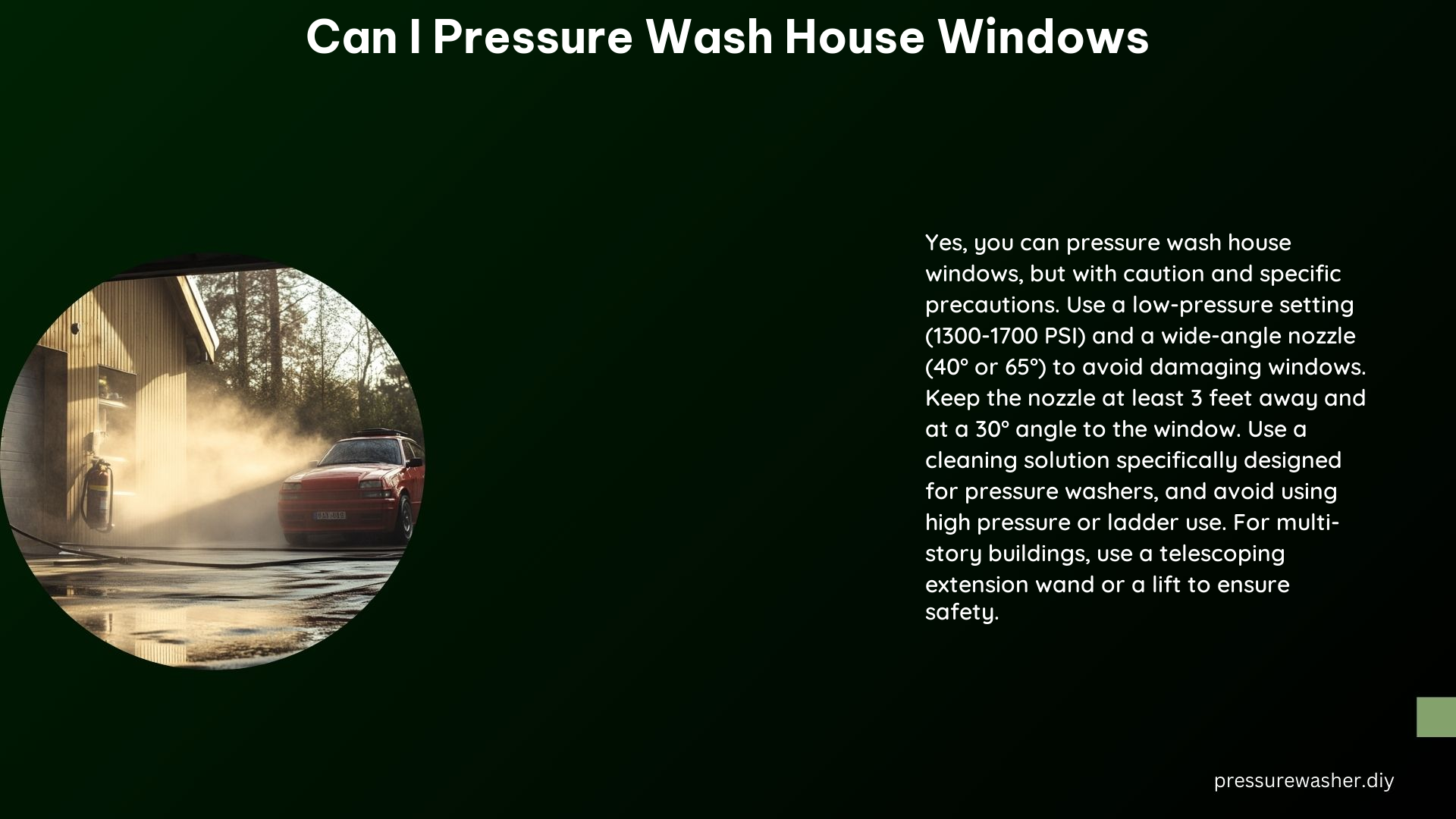Pressure washing house windows can be an effective way to clean and maintain their appearance, but it requires careful consideration to avoid potential damage. As an expert on the topic, I’ll provide a comprehensive guide on the proper techniques, safety precautions, and best practices to ensure a successful and safe pressure washing experience for your house windows.
Safety Precautions
Pressure Setting
The key to safely pressure washing house windows is to use a low-pressure setting, typically between 1,300 to 1,700 PSI (Pounds per Square Inch). Higher pressure settings can crack or loosen the window putty, leading to leaks and potential damage to the window frame.
Nozzle Selection
Choosing the right nozzle is crucial for minimizing the force applied to the windows. A wide spray pattern nozzle, such as a 40-degree or 65-degree nozzle, will distribute the water more evenly and reduce the concentrated force on the window surface.
Distance and Angle
Maintaining the proper distance and angle when pressure washing windows is essential. Stand 3 to 5 feet away from the window and maintain a 30-degree angle to the surface. This helps to reduce the direct impact of the water on the window.
Ladder-Free Approach
Never use a ladder to pressure wash windows or siding. This can be extremely dangerous and increase the risk of falls or other accidents. Instead, use a water-fed pole or consider hiring a professional window cleaning service for high-up windows.
Preparation

Screen Removal
If possible, remove any window screens before pressure washing. This will allow you to clean the windows more thoroughly and prevent the screens from getting in the way during the cleaning process.
Window Frame Inspection
Carefully inspect the condition of the window frames, especially if they are made of wood. Look for any cracks or damage that may need to be sealed with window caulking before pressure washing to prevent further deterioration.
Outdoor Item Protection
Before starting the pressure washing, take the time to move or cover any outdoor furniture, decorations, or potted plants that could be damaged by the water spray.
Cleaning Process
Soap Application
Begin the cleaning process by applying a pressure washer-approved soap or detergent to the windows using a low-pressure nozzle. This will help to loosen and lift any dirt, grime, or debris on the surface.
Thorough Rinsing
After allowing the soap to dwell for a few minutes, use a wide spray pattern nozzle to thoroughly rinse the windows, starting from the top and working your way down. This will ensure that all the soap and loosened dirt are removed.
Squeegee or Microfiber Mop
To prevent water spots and mold growth, use a squeegee or a microfiber mop to remove any excess water from the windowsills and frames. This step is crucial for maintaining the long-term appearance and integrity of your windows.
Additional Tips
Reverse Osmosis (RO) Water
For the best results and to prevent water spots, consider using reverse osmosis (RO) water for the final rinse. RO water is highly purified and free of minerals that can leave unsightly residues on the windows.
Water Fed Pole or Lift
For high windows or commercial properties, a water-fed pole or lift can be a valuable tool. These systems allow you to clean windows from the ground, reducing the need for ladders and improving safety.
Pricing Considerations
When charging for pressure washing house windows, consider factors such as the number of stories, the size and type of windows, and whether interior cleaning is required. Adjust your pricing accordingly to ensure a fair and profitable service.
By following these comprehensive guidelines, you can safely and effectively pressure wash your house windows, maintaining their appearance and protecting their long-term integrity. Remember, attention to detail and a focus on safety are key to achieving the best results.
Reference:
– Pressure Washing Windows: A Complete Guide
– How to Pressure Wash Windows Safely
– The Dos and Don’ts of Pressure Washing Windows
